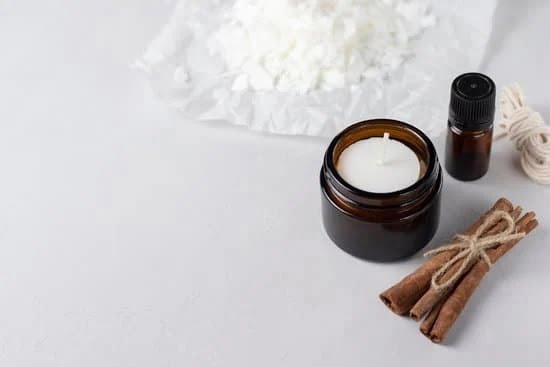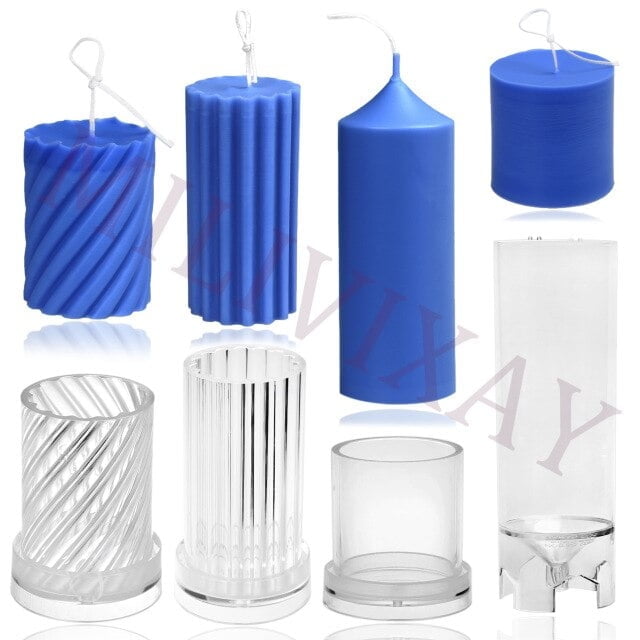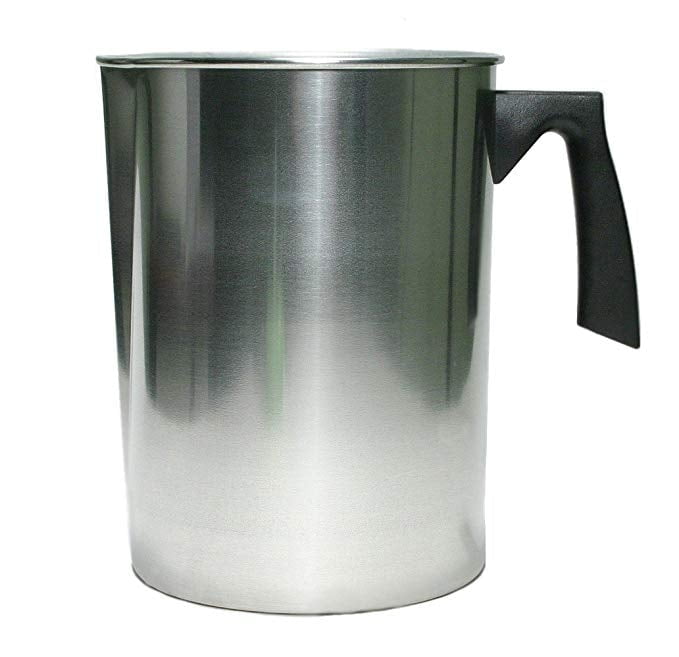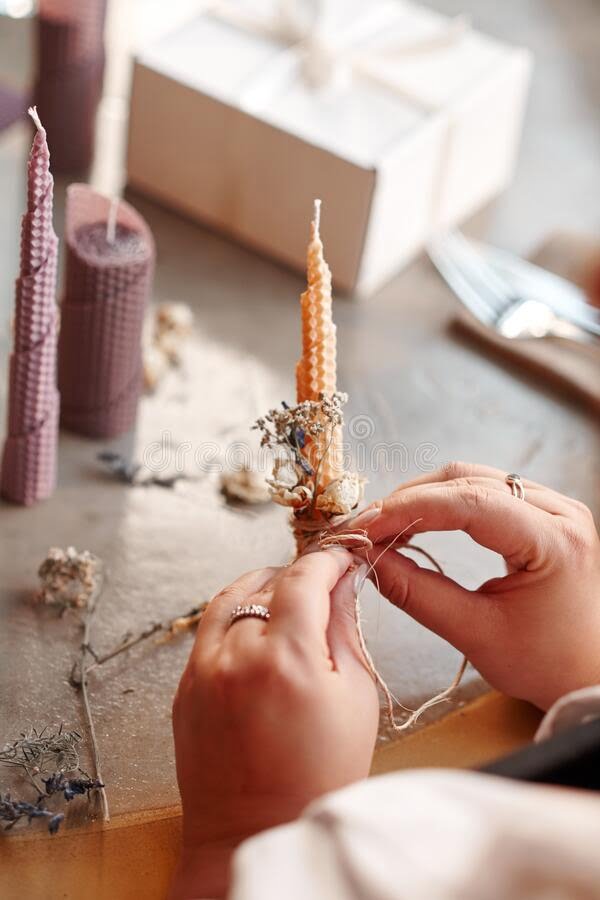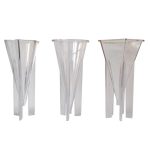Introduction
Candle making has been around for centuries, and it is one of the oldest crafts. In early times, candles were made using animal fats, however by the Middle Ages beeswax was used as the main ingredient. It wasn’t until the 19th century that paraffin wax was introduced as an alternative to beeswax. As candle making evolved its popularity also grew, both for practical and decorative purposes. Today, candle making is a beloved hobby enjoyed by many people all over the world.
Making your own homemade candles offers numerous benefits. One of these is the ability to choose whatever scent you want in order to customize your candles to your own particular preferences and those of family members or friends that you intend to gift them to. Some unique combinations include floral, citrus and woody scents as well as unlimited possibilities with essential oils such as lavender or eucalyptus oil that can add a beautiful fragrance when incorporated into your candles. Aside from being able to select your favorite aromas, another perk of making your own candles is cost savings due to being able to buy the materials in bulk and make multiple candles at once in various shapes and sizes per batch. Home-made candles also make excellent gifts for any occasion such as Christmas, birthdays or weddings by adding a personal touch that cannot be found in store-bought items; friends and family members will surely appreciate how heartfelt they are! Furthermore, you control what goes into each candle which allows you to select non-toxic ingredients only so there are no harmful chemicals released when lit – making them safe for everyone around including pets!
Gathering the Necessary Materials
Gathering the necessary materials is a vital part of effective candle making. In this section, we will take you through the list of essential supplies and provide links to some top retailers that sell them.
Essential Supplies:
– Wax: There are several popular wax types available for candle making, with some examples being paraffin, beeswax, soy wax, and palm wax – retailing in granules, pellets or blocks. All these waxes vary in usage instructions (i.e melting temperatures) so please be sure to read product descriptions carefully before purchasing any.
– Wick: Choosing the right wick is essential to getting a good burn, with too small a wick affecting burning time and too big increasing chances of an uneven flame or smoking. Wicks generally come as pre-waxed cordage and include flat cotton braid for container candles or zinc/tin core for pillar candles.
– Containers & Moulds: Depending on what type of candle you want to create will determine whether you use containers or moulds; containers being used mostly for votive and taper candles while moulds are used primarily when creating pillar candles (3” ” 6” wide).
– Fragrancing & Colouring: If desired, you can add fragrance oils/essential oils and various pigments/dyes inside your candle mixtures while they are molten allowing them to disperse evenly throughout – resulting in lovely scented coloured candles!
Now that you have gathered all the necessary materials needed for successful candle making it’s time to move onto the following step – preparation!
Making the Base of the Candle
In this candle making tutorial, you’ll learn the basics of pouring wax to make perfectly shaped candles. First, measure and fill your desired wax into a melting pot. Then place the pot on medium heat, stirring occasionally to make sure it melts evenly. Once the wax is completely melted, let it cool down slightly and pour it into your molds. For a more professional look, pour slowly and hold the pouring pot close to the mold to reduce bubbling. Pour until you reach the desired shape and level of volume, then put aside aside let it cool down for at least 15 minutes. Finally, remove from mold and your candle is ready for use!
Adding Color and Fragrance to the Candle
Once you have perfected the basic techniques for making a candle, it is time to start adding color and fragrance to give it a personalized touch. Selecting the right combination of color and scent can take your candles from the standard store-bought variety to something that stands out in a crowd.
When selecting color and scent pairings, there are a few key tips to keep in mind. Start by considering the type of scent you would like first; using spices or items like oranges or cinnamon can help create specific moods or allude to seasonal changes while also providing a pleasant aroma when lit. Once you know what scent you want your candle to be, then choose the blend of colored wax beads, or dye chips that will accurately represent the hue of your chosen scent. Both should work together to set the atmosphere desired by whoever is using it; oranges may conjure an image of summer while cinnamon may evoke wintertime festivities.
In terms of fragrancing themselves, certain scents such as jasmine or lavender should be used sparingly as too much could overwhelm the space with its aroma. For other more milder scents, use around 6-8oz for every pound of wax being used ” remember that concentrations need to remain consistent when multiple scents are being blended together. Other tools such as plant-based fragrances oils can also help enrich not just smells but add depth as well. Finally, consider adding little flame accelerators such as stearine flakes which will promote more powerful burning abilities and reduce flaring from higher concentrations of fragrance oil than normal paraffin candles require.
Finishing Touches
The final step in creating your custom candle is to decorate it with embellishments! Embellishments are items used to enhance the design of your candle, and make it truly unique. While there are many standard decorations that you can find in craft stores, often the best way to make a truly personal statement is to make use of items unique to your own home.
Common materials for embellishments include gems, ribbons, dried flowers, feathers or twine. When applying these items to the outside of the candle think about how you’d like them arranged and what they will mean to your design. For example if you’re making a beach-themed candle you may wrap some twine around the base and glue shells along the length of it or even add some plastic beach toys as a fun element! If adding raised elements, be sure to use hot glue so that they stick securely. After everything has been added let sit for 2 hours before releasing it from the mould and enjoy your beautiful creation! Another great way to spice up a candle is with painting techniques such as sponge painting or marbling including processes like water color dipping or wax resist techniques for a more clean aesthetic. Gels and glitters can also really ramp up any design when used correctly so don’t be afraid to play around ” after all this is your creation! Have fun with it by experimenting with different colors and textures until you’ve perfected just the right look for whatever special occasion you may have in mind.
Final Touches
Once a candle has been crafted, there are a few more steps that must be taken in order to protect the quality of the product and ensure it will burn properly. First, it is essential to trim any excess wick and threads before lighting the candle as they can cause unintended ripples and unevenness. To determine the correct length of wick, light a sample piece before inserting any wicks into your finished candle. Additionally, it is important to maintain consistent wax temperature when adding more wax or topping off candles,as temperatures that are too low or high can lead to instability within the wax itself. When all steps have been completed,double check that the wick is firmly secured and in an upright position for best results when burning your handmade candle. Finally, enjoy your work knowing you’ve created something unique with lasting beauty!
Troubleshooting
When it comes to candle making, it can be difficult to troubleshoot common issues. After all, you don’t want to ruin your hard work! To make it easier for aspiring candle makers, put together detailed troubleshooting guides that include step-by-step solutions for some of the more common difficulties. Begin by offering guidance on how to deal with excess wax around the wick after pouring; this is a common issue and one that should be addressed early on in their candle making journey.
Next, offer advice on how to avoid streaks while coloring wax. The most common mistake that beginners make here is using too much dye and not melting it long enough in the wax. Advise them to be patient and to use only a tiny amount of dye until they become adept at creating this effect.
Additionally, give advice about preventing air bubbles during the cooling process. Most amateurs are unaware that waiting until the wax is completely cool before removing the mold can cause bubbles in the finished product as too much heat creates an inflexible mold that won’t conform easily when removed. The key here is leaving plenty of time between pouring and removal so as not to trap air inside while heating up the lip of the container in order to create a “seal” and prevent bubbling once cooled.
Finally, provide tips for safely disposing of excess materials from failed attempts. Remind people never to pour used wax down drains or into trash cans as these substances could congeal within pipes and cause blockages leading to costly plumbing repairs or worse yet fires if ignited improperly in an enclosed space. Suggest utilizing old jars or cans lined with heavy paper before toss into landfill sites for extra caution when it comes time for disposal.
Wrapping Up
That’s a wrap! You’ve finished working your way through this candle making tutorial. We hope you feel confident in creating the perfect candle for any occasion, from relaxing spa-like candles to vibrant, cheerful ones. When it comes to customizing your candles, the limit is really your imagination!
To help inspire your creativity, have fun with different shapes and sizes for unique candle holders and vessels as a starting point. You could use mason jars, teacups, or shaped glasswear like skulls and animals! Don’t forget about adding colorful decorations and embellishments like wax ribbons, glitter, starfish shapes, dried flowers, and beads. An unusual scent blend like lavender mint or honeysuckle chamomile can add an interesting twist too. The opportunities are really limitless when it comes to picking materials that match the theme and ambience you want to create with each new handcrafted candle. Have lots of fun experimenting and enjoy expressing yourself in this creative art form!

Welcome to my candle making blog! In this blog, I will be sharing my tips and tricks for making candles. I will also be sharing some of my favorite recipes.

